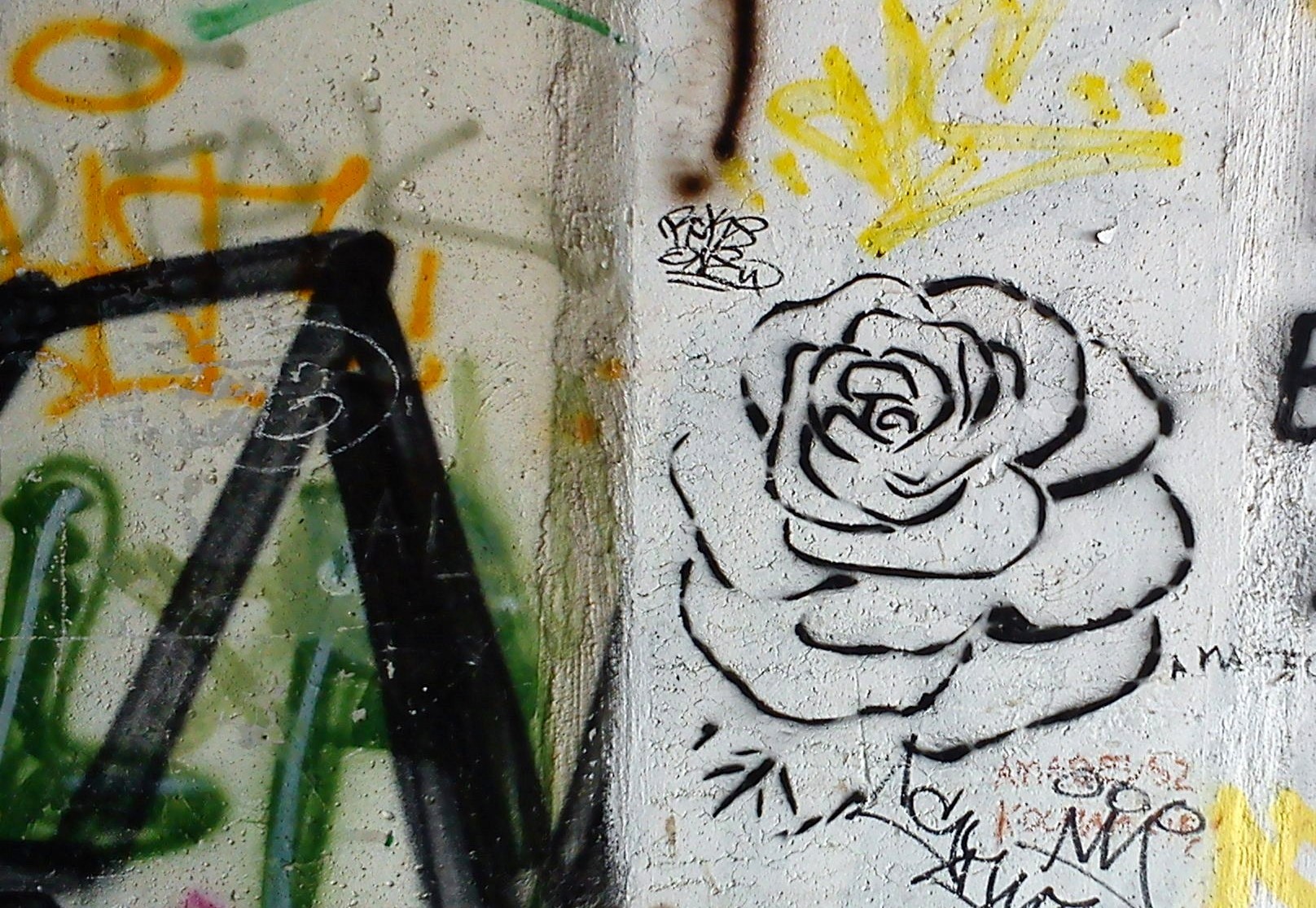
Fighting totalitarianism: lessons from the White Rose resistance Part III
In this third and final installment of the gripping and inspiring story of a group of young people’s bravery and idealism in opposing Nazi Fascism during the Second World War, the author recounts the heroic efforts which ultimately cost the lives of the founders of the White Rose Movement. This article follows on from Fighting Totalitarianism: Part 1 and Part 2 .
On 23 July 1942 there were emotional scenes at Munich’s Ostbahnhof (East train station) as Sophie Scholl said goodbye to her brother Hans and his friends, who were setting off for a three-month stint of duty on the Russian front. During this time the soldier-medics were able to reflect on the 16-day leaflet campaign in which they had dared to confront Hitler and the Third Reich with the regime’s outrageous crimes, and to ponder their next move.
That summer Sophie was forced to work in a munitions factory. There she grew to admire the Russian women who formed part of the Nazi system of imported slave labour from the occupied zone – around seven million, mainly Slavs – and along with her friends pooled ration coupons for them, so as to treat them not as aliens but as sisters.
Her father had been arrested by the Gestapo earlier in the year after one of his secretaries had reported him for having criticised the regime in his office, and in August he was sentenced to four months’ imprisonment for ‘treachery’. On a number of summer evenings Sophie stood outside the prison wall playing on her flute a tune her father loved, Die Gedanken sind frei (‘Thoughts are free’).

When Sophie’s boyfriend Fritz Hartnagel was deployed to the eastern front in May 1942, her parting gift to him had been two volumes of sermons by John Henry Newman. Witnessing the carnage in Russia, Fritz wrote to Sophie to say that reading Newman’s words in such an awful place was like tasting ‘drops of precious wine’.
In another letter Fritz wrote:
“We know by whom we were created and that we stand in a relationship of moral obligation to our creator. Conscience gives us the capacity to distinguish between good and evil”
– words taken almost verbatim from a sermon Newman preached in Oxford called ‘The Testimony of Conscience’. In that sermon Newman explains that conscience is an echo of the voice of God enlightening each person to moral truth in concrete situations. All of us, he argues, have a duty to obey a good conscience over and above all other considerations. (This is one instance among many, in which good reading fuelled the students in their fight against totalitarianism.)
Elsewhere on the Russian front, Hans and his closest friend Alex Schmorell found themselves together in the same field hospital. At night they mixed with Russians and drank schnapps and sang with them – behaviour which was completely at odds with official Nazi policy. Traditional notions of chivalry were meant to be dropped and every restraint removed in what was really a crusade against Communism, for Hitler had publicly demanded that this struggle be conducted with ‘unprecedented, unmerciful, and unrelenting harshness’.
The elimination of Bolshevism and the establishment of a greater German Reich were seen in terms of the creation of a new world order led by the master race of the West, which had been chosen by destiny. Alex, who was half-Russian, found it highly repugnant to be dressed in the uniform of a foreign predator while he trod on his native soil, and by way of making amends, taught his fellow doctors to speak Russian and introduced them to Russian workers. They soon caught his enthusiasm for all things Russian and refused to tolerate the brutish behaviour they were supposed to mete out to the Slavs, whom official propaganda branded an inferior race, if not subhuman.
When Hans and Alex returned from the eastern front to recommence their studies that November, they were more determined than ever to undertake deeds of resistance so as ‘to make a breach in the wall of terror’. Having seen how human life was risked and wasted on an unimaginable scale on the eastern front, the White Rose soldier-medics reasoned, why not, then, risk it in opposing the regime? Rather than living in continuous fear of being under surveillance or informed upon, and overwhelmed by danger, why not resist the regime actively rather than just passively?
On arriving back in Munich, Alex and Hans immediately set to work establishing a distribution network for the resistance leaflets, with cells in every German university. They attempted to forge links with the resistance movement in Berlin (dubbed by the Nazis the ‘Red Orchestra’), with a loosely-formed resistance group in Hamburg operating out of bookstores and coffee shops, with members of the Kreisau Circle in Bonn, and with key individuals such as Dietrich and Klaus Bonhoeffer.
After the Bach Choir Christmas concert on Sunday 20 December, six of the White Rose students met to allocate responsibilities. The tasks that were assigned were the recruitment of new students; the gaining of financial backing; taking care of the cash and keeping the account books; sourcing paper and envelopes; finding a second duplicating machine; and writing the text for the next leaflets.

The fifth leaflet was composed by Hans and entitled the ‘Resistance Movement in Germany’. Over several nights around 10,000 copies were cranked out one by one on a duplicating machine.
They were put in envelopes with addresses typed out from address books kept at the Deutsches Museum, packed into rucksacks and suitcases, then taken for posting in major cities in southern Germany and Austria, in order to confuse the Gestapo. This meant moving around with fake travel documentation and the risk of being caught in random searches or at check-points.
The students were all back in Munich by 28 January and, after attending a cello concert that evening, took to the streets carrying suitcases and rucksacks loaded with leaflets, each going their separate way to distribute their load. In the course of two or three hours they distributed around 3500 leaflets in a 10-square-mile area centred on the main railway station.
By now the White Rose resistance had changed from being a small group of idealist students based in Munich to a more dedicated and organised anti-Nazi organisation.
The military situation had also changed. The students had begun operating at the height of Hitler’s success, when his hold on the German people was greatest and when those resisting him thirsted in vain for signs that pointed to a reversal of his long run of luck. Now, in January 1943, there were dramatic signs of such a reversal, both in the east and in North Africa. The conviction among the White Rose students that the times must not be accepted passively, but opposed, was now being strengthened by events – and a change of tone was apparent in the fifth leaflet, which proclaimed,
“Hitler cannot win the war; he can only prolong it.”
The Battle of Stalingrad came to an end on 2 February; it was one of the bloodiest ever fought, and the heavy losses inflicted on the Wehrmacht make it arguably the most strategically decisive battle of World War II, if not the turning point. Though it was not the first major setback for the German war machine, Stalingrad marked the first time that the Nazi regime publicly acknowledged a failure in the war. It was a crushing defeat: Germany’s Sixth Army had been destroyed, and the armies of her European allies had been shattered.
The defeat blew apart Germany’s reputation for invincibility and dealt a devastating blow to the country’s morale.
The announcement on the wireless stunned the nation, because victory had been all but promised. After Stalingrad there was a tightening of restrictions in Germany and an intensification of terror.
On 3 February, the first of the two days of official mourning to mark the defeat at Stalingrad, Alex, Hans and a third soldier-medic Willi Graf mounted a graffiti operation. That night they wandered around the centre of Munich painting anti-regime slogans on public buildings and ordinary houses. Twenty-nine slogans reading ‘Down with Hitler’ or ‘Hitler the mass murderer’ were painted using stencils, and another four reading ‘Freedom!’ were painted free-hand. Next to some of them were swastikas with an ‘X’ crossing them out. The letters were a metre high and painted in black tar-based paint, which was very hard to remove.
After a second graffiti operation on the night of 8 February, the entrance to the university was put under permanent guard. Five days later the White Rose students began to distribute the sixth leaflet, written by the university lecturer Kurt Huber, posting thousands of copies in various major cities, as before. And on 15 February they mounted a third night-time graffiti operation in Munich.
Hans now focussed his attention on his most daring plan to date: spreading the leaflets from within the university. This time, none of Hans’s friends were willing to help him, only Sophie. The story of the last six days of Hans and Sophie is movingly told in the Oscar-nominated film Sophie Scholl: the final days (2005). Drawing on interrogation transcripts, court proceedings, letters and memoranda, the drama of their leafleting efforts, how they were caught, their cross-examinations by the Gestapo, the trial itself, and their execution a few hours later, on Hitler’s orders, is portrayed to brilliant effect and brings out the heroism of the protagonists more than any written account could.
* * * * *
A copy of the sixth leaflet was smuggled out of Germany, through Scandinavia to Britain, where it was used by the Allied Forces, when in mid-1943 they dropped millions of propaganda copies over Germany. The White Rose leaflets were spread secretly to the occupied countries and even made their way into concentration camps. The students were hailed as heroes in Russia; and in the United States the exiled Thomas Mann, the voice of authentic German culture, spoke of them on the wireless as ‘gallant, glorious people’.

Like what you’ve read? Consider supporting the work of Adamah by making a donation and help us keep exploring life’s big (and not so big) issues!

